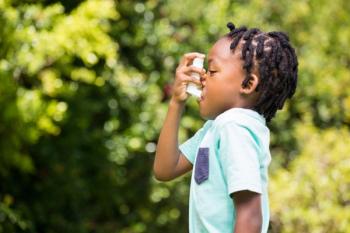
- Consultant for Pediatricians Vol 5 No 10
- Volume 5
- Issue 10
Case in Point: Night Terrors
The patient is a healthy 5-year-old boy who typically awakens 90 minutes after falling asleep. His parents find him screaming, sweaty, and standing up wide-eyed in bed (Figure A). These episodes occur 3 or 4 times a week. He is otherwise a happy, well-adjusted child who attends kindergarten. He has an older sibling with whom he gets along well. There have been no changes in the family.
The patient is a healthy 5-year-old boy who typically awakens 90 minutes after falling asleep. His parents find him screaming, sweaty, and standing up wide-eyed in bed (Figure A). These episodes occur 3 or 4 times a week. He is otherwise a happy, well-adjusted child who attends kindergarten. He has an older sibling with whom he gets along well. There have been no changes in the family.
The patient no longer takes naps, and he typically sleeps 10 to 11 hours a night. He has a regular bedtime.
NIGHT TERRORS
This child has sleep (night) terrors. Sleep terrors--parvor nocturnus in children and incubus attacks in adults--are characterized by marked autonomic nervous system activation: tachycardia, tachypnea, mydriasis, tremulousness, and sweating. Most children with sleep terrors remain in bed; others may walk or run during an attack. The majority of sleep terrors last less than a minute to several minutes; however, some episodes may last as long as a half-hour.1
Attempts to wake the child during an attack can lead to a paradoxical response involvingincreased agitation without successful awakening. Sleep terrors end abruptly, with a rapid return to a deep sleep; complete amnesia in the morning is typical. This amnesia distinguishes night terrors from nightmares, the content of which can often be recalled.
Night terrors are one of the larger group of sleep disturbances known as parasomnias, all of which are marked by undesirable behaviors and movements during arousal from sleep. Arousal disorders include sleep terrors, sleepwalking (somnambulation), and confusional arousals (features in children include both sleep terrors and sleepwalking). The arousal sleep parasomnias occur during arousal from stage 3 or 4 non-rapid eye movement (non-REM) sleep, rather than arousal from rapid eye movement (REM) sleep.1-3
ETIOLOGY
Childhood is a common time for sleep terrors to occur: the peak age is between 5 and 7 years. Sleep terrors tend to resolve before adolescence. It is estimated that 3% of children and less than 1% of adults are affected by sleep terrors. Children have more slow-wave sleep, also known as delta sleep or non-REM sleep stages 3 and 4, than adults. Slow-wave sleep occurs mostly in the early sleep cycles; typically, sleep terror onset is noticed in the first third of the night. It is estimated that about two-thirds of sleep terrors occur in the first non-REM period.1,3
Factors that may increase the likelihood of sleep terrors include sleep deprivation; fever; medications, such as neuroleptics, antihistamines, sedative-hypnotics, and stimulants; and such disorders as obstructive sleep apnea and post-traumatic syndrome.1,3 Medical conditions that may precipitate arousal parasomnias include nocturnal asthma and GERD. An association with parasomnias and childhood migraine headaches has also been reported.4
Genetic risk factors have been considered in sleep disturbances. A 10-fold greater risk of sleep terrors and sleepwalking was found in first-degree relatives with sleep terrors compared with the general population; a child had a 60% chance of being affected if both parents were affected.5
DIAGNOSIS AND TREATMENT
A diagnosis of night terrors is usually made by a detailed clinical history. A videotape of an episode may be useful. Nightmares, cluster headaches, and epileptic events must be excluded.
Nightmares occur during REM sleep. These typically occur in the second half of the night; children become alert quickly when aroused, respond to comforting, and often offer a detailed description of the dream. Sleep disturbances may be detected by electroencephalography, which may reveal an increase in sleep instability during non-REM sleep. The electroencephalogram may be normal, however, and may therefore not be useful.1 Overnight polysomnography has been used as a research tool.
Treatment involves reassurance and parental guidance.2 A major focus should be on making sure the child gets regular and sufficient sleep. It may be wise to install gates on stairwells and to avoid bunk beds so that sleepwalkers do not get hurt. Some children with nightly sleep terrors may benefit from scheduled awakenings before the anticipated sleep terror occurs. Such was the case with this patient (Box).
Pharmacotherapy may be considered for complex or protracted cases. Options include benzodiazepines (clonazepam [Klonapin]) and tricyclic antidepressants (imipramine [Tofranil]). Affected children may also benefit from consultation with an expert in pediatric sleep disturbances or pediatric neurology.1,2
References:
REFERENCES:
1.
Mason TB, Pack AI. Sleep terrors in childhood.
J Pediatr.
2005;147:388-392.
2.
Nightmares and night terrors in children.
Am Fam Physician.
2005;72:1322.
3.
Guilleminault C, Palombini L, Pelayo R, Chervin RD. Sleepwalking and sleep terrors in prepubertal children: what triggers them?
Pediatrics.
2003;111: e-17-25.
4.
Bruni O, Fabrizi P, Ottaviano S, et al. Prevalence of sleep disorders in childhood and adolescence with headache: a case-control study.
Cephalalgia.
1997;17:492-498.
5.
Kales A, Soldatos CR, Bixler EO, et al. Hereditary factors in sleepwalking and night terrors.
Br J Psychiatry.
1980;137:111-118.
Articles in this issue
over 19 years ago
Photoclinic: Hereditary Hemorrhagic Telangiectasiaover 19 years ago
Diabetic Ketoacidosis in Children:over 19 years ago
Adolecent Medicine Update:over 19 years ago
A Collage of Hereditary Childhood Disordersover 19 years ago
Orbital Abscessover 19 years ago
Herpes Zoster (Shingles) in a Teenagerover 19 years ago
Editors Commentary: Three in One . . .over 19 years ago
Photoclinic: Incontinentia Pigmentiover 19 years ago
Anaphylactic Reaction to Milk in an InfantNewsletter
Access practical, evidence-based guidance to support better care for our youngest patients. Join our email list for the latest clinical updates.








